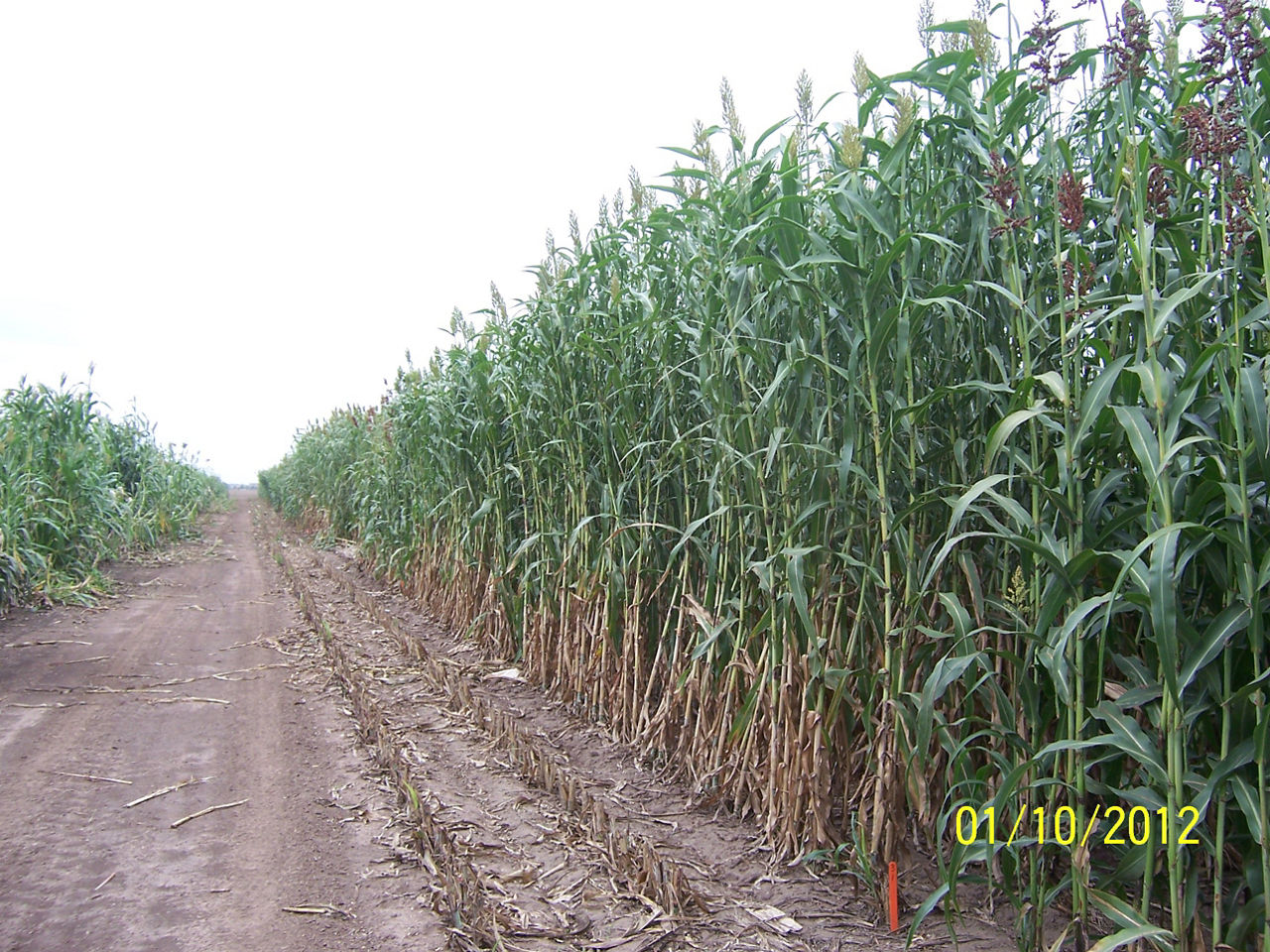Forage Sorghum Management
February 29, 2024
Introduction
Forage sorghums are a great alternative to corn silage because they can range from 6 to 14 feet tall and can equal corn in terms of feed value. Sorghum crops typically require less water than corn, so they can fit a broader environment to provide silage for livestock.1

Seeding Rates
Forage sorghum seeding rates vary based upon the environment and yield goals. Dry areas may plant five pounds per acre while areas with irrigation or ample rainfall may plant up to twelve pounds per acre.2 The establishment goal is to maximize final population; therefore, it is important to understand the seed size of the selected product and translate the pounds per acre to intended plants per acre. Since seed sizes can vary greatly between products, it is important to consult the label prior to setting the planter. Ideal plant populations range from 30,000 to 120,000 plants per acre.1
Forage sorghum emergence and vigor tends to be weaker than corn; therefore, increasing planting rates beyond the final intended stand can help aid in population establishment. An understanding of soil moisture, soil temperature, and the weather forecast can help determine planting-time soil conditions and be a guide to deciding the seeds to plant to obtain the desired final stand.3 Silage quality is also partially influenced by seeding rate. Lower planting rates result in plants with thicker stalks. This can increase silage yield, but thinner stalks are preferable for higher quality silage.1
Weed Control
Sorghum has fewer herbicide choices than corn or soybean. As a result, a pre-determined weed control strategy can help increase yield potential. Starting with a clean field prior to planting is the first step. A good pre-emerge program helps reduce competition from weeds during early vegetative growth stages. Selecting a product with safened seed allows the use of metolachlor. Atrazine is the only option if the seed is not safened.2 When the barrier of the pre-emerge herbicide begins to weaken, post emergence options are available. As with any herbicide application, read and follow all label directions.
Cultural weed control can also be implemented. Narrow rows can help reduce the time needed for canopy closure which can help reduce weed competition. With wider rows, cultivating early in the growing season can help reduce weed populations.3 Problematic weeds, such as Johnsongrass or shattercane may be controlled prior to planting to reduce competition or may be managed during crop rotation.1
Harvest
Harvesting forage sorghum for silage should occur during dough stages. Earlier dough stages help increase the nutrient value of the feed, though harvest of later dough stages may lead to less storage loss.1 Many producers’ swath the sorghum silage crop to wilt the crop to an acceptable moisture content. A chopper with a pickup attachment is used to harvest the crop. This harvest method can be used for forage and grain type sorghums. If the product doesn’t produce grain, harvest may occur after a killing frost to help maximize yield potential.4 However, if there are a lot of acres, waiting may not be an option.
The moisture content target for silage varies by silo type. For a bunker or pile type, moisture content can vary between 70% and 75%.2 For an upright silo, moisture content should be 70% or less depending on the silo type to keep the silage from seeping moisture out the bottom of the structure. The lost moisture through seepage causes the silage to lose soluble carbohydrates (quality) and can damage the silo. Setting equipment to obtain the proper chop length influences the feed value and storage stability of the silage. Most custom choppers offer the option to have the silage run through a processor on the chopper to break up the sorghum kernel which increases the cattle’s ability to digest the kernel starch better. Shorter chop lengths promote better packing to help reduce losses and are associated with lower ADF (acid detergent fiber) levels.
Mark Bartel
Channel Agronomist
Sources
1Marsalis, M.A. and Bean, B. 2010. Western forage production guide. United Sorghum Check Off Program. westforageguideforweb092611.pdf (sorghumcheckoff.com)
2Pryor, R., Anderson, B., and Hay, P. 2013. Tips for growing forage sorghum. CROPWATCH. University of Nebraska-Lincoln. https://cropwatch.unl.edu/tips-growing-forage-sorghum-unl-cropwatch-oct-22-2013.
3Forage sorghum seeding tips. 2018. Hay & Forage Grower. Forage Sorghum Seeding Tips | Hay and Forage Magazine
4Undersander, D. 2003. Sorghums, Sudangrass, and Sorghum-Sudan Hybrids. Focus on Forage. University of Wisconsin-Madison. Sorghums, Sudangrass, and Sorghum-Sudan Hybrids – Team Forage (wisc.edu)
1110_349351